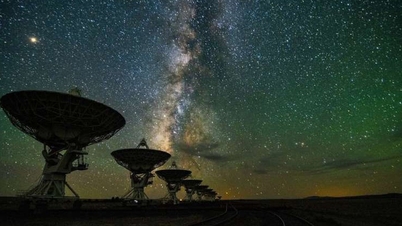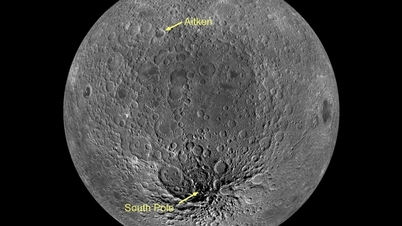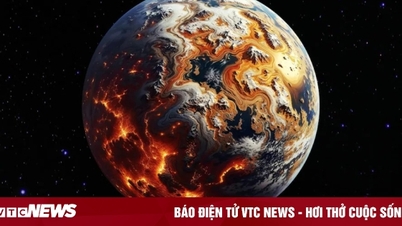
The Sun: A giant mass of plasma gas and dramatic cosmic phenomena
The Sun, the center of the solar system, is a giant mass of gas with a surface temperature of up to 6,000 degrees Celsius, nearly five times hotter than volcanic lava on Earth.
Unlike ordinary gases, the Sun is made of plasma - a special state of matter where atoms are ionized, split into positively charged nuclei and negatively charged electrons.
The existence of these charged particles allows plasma to conduct electricity and interact strongly with magnetic fields.
During a total solar eclipse, when the Moon covers the Sun, we can observe the corona - the faint, fragile atmosphere surrounding the Sun.
The corona reaches temperatures of millions of degrees Celsius, much hotter than the surface of the Sun. This extreme heat causes plasma particles to shoot out of the Sun, overcome gravity and spread throughout the Solar System, forming the "solar wind".
This invisible plasma stream fills a vast bubble of space, far beyond the orbit of Pluto, at speeds of up to 3 million kilometers per hour. To put that in perspective, the solar wind takes less than a minute to circle the Earth, while the International Space Station takes 90 minutes.
Scientists have used space-based instruments, notably the Parker Solar Probe, to get close and measure the solar wind directly as it exits the Sun. The probe is also equipped with a specialized camera to observe sunlight scattered by the solar wind, a process similar to what makes Earth's sky blue.
Big bangs and "solar storms"
Although the solar wind constantly circles Earth, our planet's magnetic field usually guides it safely.
However, the Sun sometimes produces massive explosions, sending giant clouds of plasma flying into the solar system, some of which are directed toward Earth. These events are called coronal mass ejections (CMEs), or “solar storms.”
CMEs are short-lived but extremely violent, unlike the continuous solar wind. The Sun acts like a giant magnet, creating magnetic field lines that plasma easily follows.
Solar winds and CMEs can distort and stretch these magnetic field lines away from the Sun. When these solar storms reach Earth, their twisted magnetic fields can interact with our planet's magnetic field, causing disturbances known as "space weather."
Space weather: From auroras to power outages
Earth is protected by the magnetosphere, a magnetic shield that shields us from solar wind and solar storms. However, during particularly strong storms, some of the solar wind plasma can enter Earth's atmosphere.
When CMEs pass by Earth, their magnetic fields can interact with Earth's magnetic field, causing the magnetic field lines of the Sun and Earth to temporarily align, allowing solar plasma to enter the atmosphere.
This phenomenon can cause major global magnetic storms, known to scientists as space weather.

Space weather, like weather on Earth, is created by its atmosphere. Scientists are always trying to study and predict this type of weather, because it can lead to serious consequences such as power outages, communication disruptions and even satellites falling to Earth.
However, besides the potential dangers, space weather also brings beautiful light shows in the sky, known as the Aurora Borealis and Aurora Australis.
These phenomena, observable near the North and South Poles, are vivid proof of the powerful interaction between the Sun and Earth.
Source: https://dantri.com.vn/khoa-hoc/bao-va-gio-mat-troi-la-gi-chung-anh-huong-ra-sao-den-trai-dat-20251107024225759.htm


































































































![Dong Nai OCOP transition: [Article 3] Linking tourism with OCOP product consumption](https://vphoto.vietnam.vn/thumb/402x226/vietnam/resource/IMAGE/2025/11/10/1762739199309_1324-2740-7_n-162543_981.jpeg)











Comment (0)